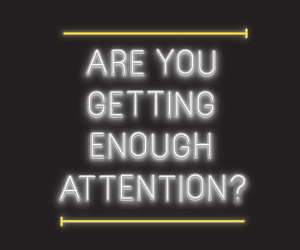 Trends are a smokescreen to marketers and they feed us assumptions on which we can plan, create and act. But the reality is that these assumptions are being overturned on an almost daily basis, writes Sheena Horgan.
Trends are a smokescreen to marketers and they feed us assumptions on which we can plan, create and act. But the reality is that these assumptions are being overturned on an almost daily basis, writes Sheena Horgan.
There’s something quite contradictory about today’s consumers. Take for example, how they want to slow things down… yet their purchasing behaviour is based on micro moment’s decision making that’s super quick.
Consumers are actively seeking connections and reaching out to communities, yet they’re also more geographically disenfranchised than ever before. Health and wellness is a priority for consumers – a trend that just keeps trending – but consumer consumption of HFSS goods and unhealthy drinking patters are still rising.
The contrary consumer, it would seem, doesn’t like being told what to do. Doesn’t like the so called trends and following the crowd. Has a cynicism (or perhaps an insight?) which they’re being sold a pup and therefore refuse to comply with the brand/marketing ask.
We’d be forgiven for thinking the contrary consumer is a small defined group that’s long been around. But there’s actually more of them than we might realise.
Take the supermarkets for example. The price and brand war has seen the cost of the shopping basket reduce. Yet consumers are sceptical of retailers’ value message as 43% agree that “supermarket deals always come with a catch” and 56% that promotions like ‘buy one get one free’ are just a way for shops to make more money”. (Board BIA consumer research 2012).
This cynicism has created an extra dimension to grocery shopping, a selective promiscuity that means consumers are grocery shopping in more than 1 outlet. They may be time poor but they have time for what matters.
User generated reviews and blogs, or so we’re told, hold great sway over today’s consumers. Yet bloggers are now moving very much towards paid for endorsement and content and once they cotton on to this consumers’ view of these recommendations will wane substantially.
We define consumer trends as the behaviours, purchases, viewpoints that consumers follow or want to follow. But with our obsession with data, marketers are constantly predicting and pre-empting these trends, sometimes before they’ve even taken flight, and acting on them. Essentially aren’t we’re just facilitating them to become a self-fulfilling prophesy? So trends aren’t in facts trends but really are the new norm – think superfoods, earrings, hipster beards.
Forbes contributor Glem Chambers was on the money when he said: “Trend following is running with the herd … [it] works because the trend followers look good for a long time while the trend persists”.
Today’s consumers can be forgiven for being disillusioned, because the Utopian promise by brands of happiness and health just isn’t panning out. The promise of governments of stability and progress isn’t happening either. And just as trust is being depleted at a rate of knots so too is hope in many regards.
Set against this backdrop Jaron Lanier, the American computer philosophy writer and visual artist, says we are entering a period in which “the act of questioning the norm has become the norm, consumer’s appetite for risk is heightened – ‘what have we got to lose’. And into that space comes creativity and often radical ideas… both good and bad.”
Trends are a smokescreen to marketers. They feed us assumptions on which we can plan, create and act. But the reality is that these assumptions are being overturned on an almost daily basis. The assumptions are based on our ability to lump groups of consumers together by age, wants and needs. And these days those presumptions are essentially flawed. We cannot accurately presume to know any one audience really because each is so layered with complexity and contradictions and yes contrarianism.
Brands pursue Millennials with assumptions on what they want and how they behave, but firstly this group by its nature defies that and secondly, why the obsession with this age cohort when we know that their disposable income is less than previous generations, and that other age cohorts have significantly more purchasing power?
The contrary consumer may be the same profile as they’ve always been, the rule breaker. But there’s also a more widespread and less contentious contrary consumer, the one that’s just simply hacked off with being fed a consensus they don’t like and being told what to do. These are the ones on the rise, the outsider consumer that’s open to an alternative message.
But here’s the rub, even if you think you’ve cracked that alternative message, like Airbnb for example, the likelihood is, as Newton put it, there’ll be an equal and contrary reaction. So a backlash is really inevitable. Trends used to be about futureproofing your brand, but now perhaps au contraire, they’re just a catalyst for consumers’ contrary cognition!
First published in Irish Marketing Journal (IMJ October Issue 2016)© to order back issues please call 016611660





















